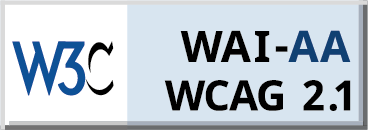The Blockchain is a far-reaching technology that has the potential to revolutionise the way in which many industries operate. The blockchain and cryptocurrency both are parallel. The blockchain is renowned for its role in the formation of cryptocurrency. The GDPR under Blockchain is a far-reaching technology and contains the potential to revolutionise the way industries operate. Blockchain compliance is well-known for its role in the formation of cryptocurrency.
- financial sectors,
- medical industries,
- legal enterprises, and government departments.
Its immutable security also allows it to be useful in other enterprises such as charities and human rights organisations as well as preventing fraud and corruption.
Better Security With Blockchain
Bitcoin is evidence of the security and unassailability of Blockchain. The history of all Bitcoin transactions is in the accounting ledger, stored across a multitude of network computers known as “nodes”. Consequently, the purpose of the nodes is to check the validity of every Bitcoin transaction submitted to the accounting ledger.
Although, the GDPR’s definition of personal data is “any information relating to an identified or identifiable natural person.” As a result, the strict rules of the GDPR will apply to organisations that store, manage or process personal data, including data stored in a Blockchain environment.
Blockchain technology allows ultimate in secure storing of data and should, therefore, keep the regulators happy, but there are some essential requirements of GDPR and Blockchains that they cannot meet.
What are the Blockchain compliance challenges for personal data processing?
In spite of Blockchain superiority in creating a secure technology conversely, it does not sit comfortably with the GDPR, as there are some challenges to compliance concerning the processing of personal data within Blockchain.
1. Durability:
Blockchains’ tamper-proof and immutable nature conflicts with GDPR and other rights to be forgotten. Data added to a blockchain is difficult to delete, making data erasure requests difficult.
2. Dividing Information:
Many data protection rules emphasise gathering and processing just required data. Blockchains duplicate data across several nodes, including sensitive information that may not be needed.
3. Controlling Identity:
Some blockchains allow pseudonymous or anonymous participation, making identity verification difficult. This makes user permission verification and data access requests difficult.
4. Management by Consent:
Blockchain data storage and processing can make it difficult to obtain explicit and informed consent from data subjects, especially if the consent procedure is not transparent.
5. Threats to Safety:
Security of personal data on a blockchain is vital since breaches can have serious implications. Secure smart contracts and private key protection are critical to this challenge.
Organisations Must Take Responsibility
The control and culpability attached to organisations are one of the issues. This does not necessarily exist with Blockchain technology, which operates in the main as a decentralised network of transactions.
“Wikipedia defines decentralisation as “a distributed and public digital ledger used to record transactions across many computers so that the record will not alter retroactively without the alteration of all subsequent blocks and the consensus of the network”.
Essentially, Blockchain is public, and no one owns the ledger. The ledger is accessible by anyone who has permission.
Data networks and blockchain networks
The GDPR, relies on culpability and accountability, with precise definitions of ownership and management of data. Data controllers and data processors have obligations and responsibilities the likes of which are not clear under decentralised data networks.
Whereas, Blockchain networks are public and immeasurable. For example, crypto compliance companies find it hard to deal with the complexities of GDPR, especially the liabilities that come with a data theft.
What About The Right To Forget?
Further, another conflict between GDPR under Blockchain is that of individual right to forget. The primary infrastructure of Blockchain technology is its immutability headlined by the acronym CRAB (create, retrieve, append, burn) There is no delete function!
Hence, this excellent explanatory article by @gautamdhameja and his in-depth explanation of this particular GDPR conflict explains some possible solutions to this dilemma. The challenge continues for compliance within blockchain and data privacy networks, without degenerating the usefulness and principles of Blockchain technology, which, in itself, is groundbreaking.
Therefore, the future has to be one of combining regulation and technology (Blockchain and future revolutionary technologies). To strengthen and improve data collection and processing for the benefit of privacy and cybercrime.
